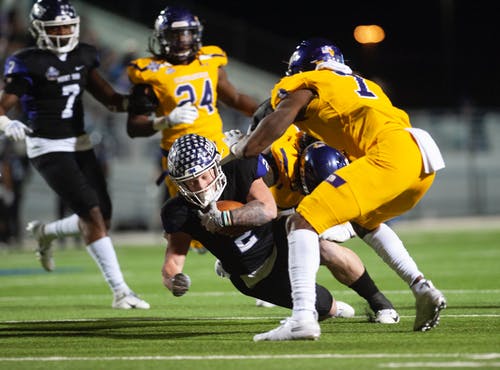Strength and conditioning coaches have a number of areas they are concerned with when it comes to an athlete’s physical preparation for sports. Increasing strength, power, hypertrophy, speed, and agility are obvious ones. Preventing injury by preparing the body for work as well as improving mobility and balance. These are all pretty straightforward to program for depending upon the strength and conditioning coach’s background, the sport coach’s philosophy, and the equipment available.
In the last twenty years we have been more concerned with getting players in shape for sports. This is the conditioning part of a strength and conditioning coach’s job. In the sport of football this has evolved a lot since the 1960’s. There was a time when this was done during August two-a-days involving long, exhausting, contact practices in pads without water to toughen up athletes. It has involved lots of exhausting sprints and even running miles. Today there are different approaches used, implements, tires, sleds, sprints of varying distances, etc.
In 1997 Steven Plisk and Vern Gambetta published an article that many people still use as their basis for designing the conditioning programs for sports. Their approach involved a pretty thorough needs analysis of the sport and position, followed by a movement analysis of what actually happens in games. How many sprints are there? What distances? How long is an average play? How much time is between plays? That sort of thing. Then crunching all this down to come up with work:rest ratios and a conditioning program that mirrors what the athletes deal with in games.
This is a lot of work in a relatively low tech world back in 1997. Today, GPS technology may make this process easier for the strength and conditioning coach. Bayliff et al studied this in a 2019 article in the Journal of Strength and Conditioning Research using division I football players in games. The authors looked at defensive backs, wide receivers, offensive linemen, and defensive linemen during games.
Results:
Defensive backs travelled almost 4600 meters in a game, defensive linemen almost 4000 meters, wide receivers more than 3500 meters, and offensive linemen almost 3500 meters in a game.
Defensive backs achieved a movement velocity of almost 20 kilometers/hour, wide receivers also close to that, defensive linemen almost 15 km/h, and defensive linemen a little more than 10.
Defensive and offensive linemen accelerated, decelerated, or changed direction significantly more times than defensive backs and wide receivers.
This was a fascinating study for me. At least in this situation there is some important information for the strength and conditioning coach. First, the defense is covering greater distances than the offense. This has implications for conditioning programs. Second, the defensive backs and wide receivers are going to be faster than the linemen. Not a surprise given the size differences here. Third, the linemen are doing more accelerating, decelerating, and changing of directions which has implications for speed and agility training.
Now, I like the fact that this studies real athletes in real game situations. This is great feedback. But, the results are specific to the athletes studied. This study was looking at Oklahoma State University’s football players during games, so it has a lot of application to those athletes. Other football programs will have different results. For example, just because OSU defensive backs were covering 4600 meters in a game doesn’t mean that the defensive backs at a random high school are doing the same. While the trends may be the same, the specifics will not be. However, this is information that can be adapted to anyone’s program.
References:
Bayliff, G.E., Jacobson, B.H., Moghaddam, M., and Estrada, C. (2019). Global positioning system monitoring of selected physical demands of NCAA Division I football players during games. Journal of Strength and Conditioning Research, 33(5), 1185-1191.
Plisk, S. and Gambetta, V. (1997). Tactical metabolic training, part 1. Strength and Conditioning, 19(2), 44-53.


